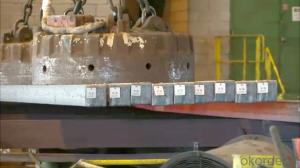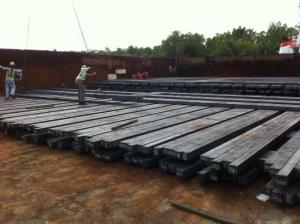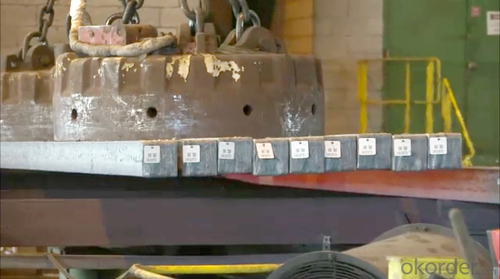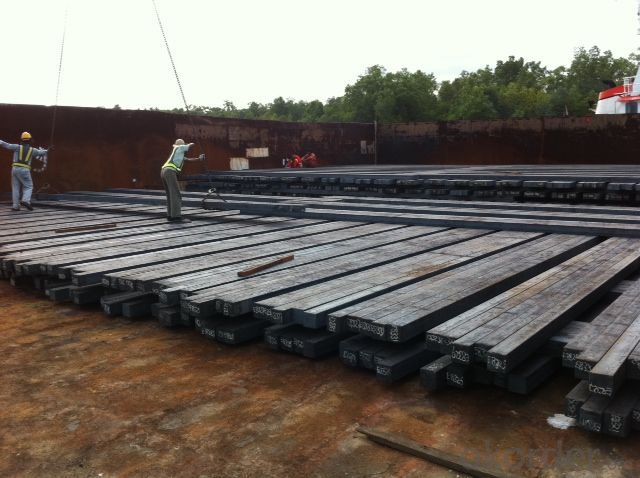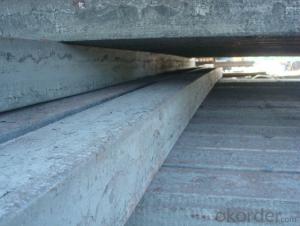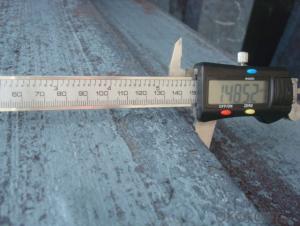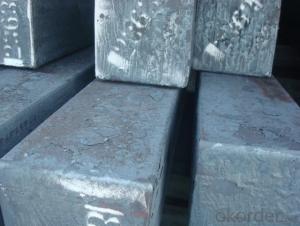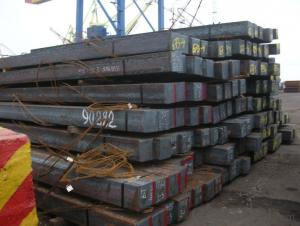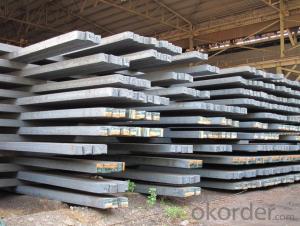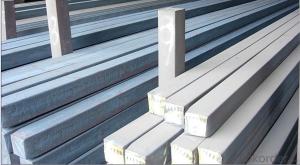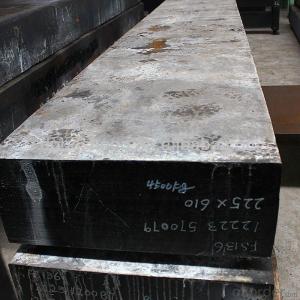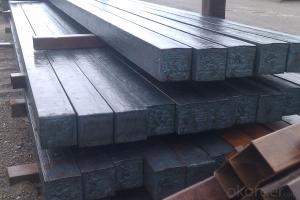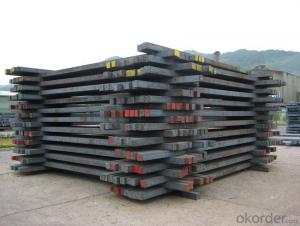Prime quality prepainted galvanized steel 730mm
- Loading Port:
- Tianjin
- Payment Terms:
- TT OR LC
- Min Order Qty:
- 100 m.t.
- Supply Capability:
- 10000 m.t./month
OKorder Service Pledge
OKorder Financial Service
You Might Also Like
Construction building material galvanized color prepainted cold
rolled steel coil
Prepainted steel sheet is coated with organic layer, which provides higher anti-corrosion property and
a longer lifespan than that of galvanized steel sheets.
The base metals for prepainted steel sheet consist of cold-rolled, HDG electro-galvanized and hot-dip
Alu-zinc coated. The finish coats of prepainted steel sheets can be classified into groups as follows:
polyester, silicon modified polyesters, polyvinylidene fluoride, high-durability polyester, etc
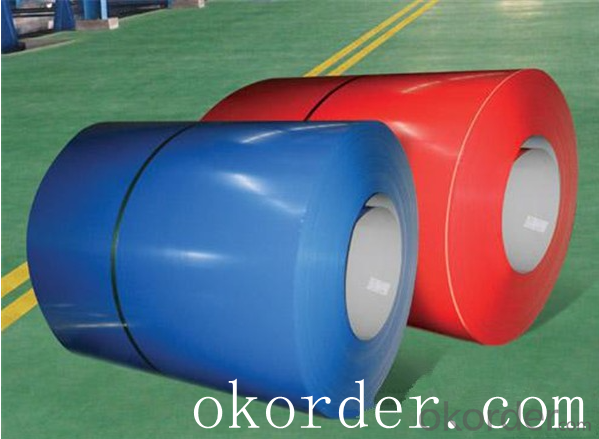
Standard and Grade :
Pre-paint galvanized steel coil | ||||
ASTM A755M-03 | EN10169:2006 | JISG 3312-2012 | ||
Commercial quality | CS | DX51D+Z | CGCC | |
Structure steel | SS GRADE 230 | S220GD+Z | CGC340 | |
SS GRADE 255 | S250GD+Z | CGC400 | ||
SS GRADE 275 | S280GD+Z | CGC440 | ||
SS GRADE 340 | S320GD+Z | CGC490 | ||
SS GRADE550 | S350GD+Z | CGC570 | ||
S550GD+Z | ||||
Application:
Outdoor | Roof, roof structure, surface sheet of balcony, frame of window, door of garage, rolled shutter door, booth, Persian blinds, cabana, etc |
Indoor | Door, isolater, frame of door, light steel structure of house, home electronic appliances, ect. |
Specifications
Commodity Name: Prepainted Galvanized Steel Coil
Standard: AISI, ASTM, DIN, GB, JIS
Grade: TDC52D+Z
Thickness 0.13-8.0mm
Width:600mm-1350mm
Zinc Coating:275g/m2
Polyester Coating Thickness:Top and Back coating thickness depend by Buyer Requirement.
Polyester Coating Type:2/2,1/2m,1/2.
Polyester Type: Polyester, silicone modified polyester, high durability polyester (HDP), polyvinylidene fluoride (PVDF)
Unit Roll Weight:5-20tons
Place of Origin Shanghai , China (Mainland)
Surface Treatment :Color Coated
Manufacture Progress:HRC-CRC-GALVANIZED-COLOR COATED
Application : Construction, electrical, transportation, steel plant, composite board plant, steel tile factory
Payment & Shipping Terms:T/T ,L/C, and FOB CHINA
Minimum Order Quantity: 25Tons
Packge Type: Moisture-proof paper inner,Steel outside,Bundle by steel rope.
Package in Container : Wood as a foot pad, wire rope reinforcement,PPGI steel coil tied together by steel rope.
- Q: Difference between medium frequency continuous casting billet and electric furnace continuous casting billet
- 5, if the intermediate frequency furnace supporting a reasonable refining facilities, also can produce high quality steel, even more than the electric arc furnace steelmaking, specific processes can be used: +VOD+LF process of intermediate frequency furnace can produce very good steel.
- Q: How are steel billets used in the production of agricultural components?
- Various agricultural components rely on steel billets as an essential raw material. These billets act as the foundation for the manufacturing process and are transformed into a diverse range of agricultural components, including plows, harrows, tillers, cultivators, and seeders. Initially, the steel billets are melted and cast into a solid form, usually rectangular or square, with a consistent cross-section. This solid steel piece is then heated and rolled into the desired shape and size required for the specific agricultural component being produced. After rolling and shaping the billets, they undergo further processes such as cutting, drilling, bending, and welding to create the final agricultural component. These components are specifically designed to endure the demanding conditions of the agricultural industry, including exposure to harsh weather, heavy loads, and frequent use. Steel billets offer several advantages in the production of agricultural components. Firstly, steel is a sturdy and resilient material that provides the necessary strength and durability for effective agricultural machinery operation. Additionally, steel is highly resistant to corrosion, ensuring that the agricultural components can withstand exposure to moisture, fertilizers, and other commonly used farming chemicals. Moreover, steel billets can be easily customized and fabricated into various shapes and sizes, allowing for the production of a wide variety of agricultural components tailored to specific farming needs. The versatility of steel billets also enables manufacturers to create components with intricate designs and features, enhancing their functionality and performance. In conclusion, steel billets play a crucial role in the production of agricultural components. The versatility, strength, and durability of steel make it an ideal material for manufacturing machinery and equipment used in the agricultural industry. By starting with steel billets and transforming them through various manufacturing processes, agricultural components are created that can withstand the demanding conditions of farming, contributing to the efficiency and productivity of agricultural operations.
- Q: How are steel billets used in the manufacturing of electrical components?
- The advantageous properties and suitability of steel billets make them commonly used in the manufacturing of electrical components. This process begins by producing steel billets, which are solid rectangular or square bars of steel formed through casting or hot rolling. When manufacturing electrical components, steel billets act as the raw material that undergoes various processes to become specific components. An example of this is the production of transformer cores, which are essential components in electrical transformers. Transformer cores made from steel billets offer high magnetic permeability, low hysteresis loss, and low electrical conductivity, making them perfect for magnetic induction applications. To manufacture transformer cores, the steel billets are heated and then shaped into thin laminations by passing them through a series of rolling mills. These laminations are stacked together and insulated with materials like varnish or paper, creating a core that efficiently transfers electrical energy between coils. Steel billets are also utilized in the production of electrical connectors, terminals, and busbars. These components require high strength, excellent electrical conductivity, and resistance to corrosion. Steel billets can be further processed using methods like forging, machining, or extrusion to create these components. Apart from transformers and electrical connectors, steel billets can be employed in manufacturing other electrical components such as motor cores, switchgear panels, and circuit breaker parts. The versatility of steel billets allows for the production of components with various shapes and sizes, catering to the specific requirements of the electrical industry. In conclusion, steel billets play a crucial role in the manufacturing of electrical components by providing a strong, durable, and cost-effective raw material that can be shaped and processed to meet the diverse needs of the electrical industry.
- Q: How are steel billets used in the production of wire rods?
- Wire rods are produced from steel billets, which are a vital raw material. These cylindrical billets serve as the starting point for the wire rod manufacturing process. To achieve the desired temperature for hot rolling, the steel billets are heated in a furnace. Once heated, the billets are sent through a series of rolling mills, where they undergo hot rolling. During this process, the billets are passed through rollers that gradually decrease their diameter and increase their length. This transformation results in the creation of long, thin, and continuous wire rods. Hot rolling causes the steel billets to undergo plastic deformation, wherein their shape changes due to the application of heat and pressure. This alteration aligns the internal grain structure of the steel, resulting in improved mechanical properties like strength, ductility, and toughness. Upon completion of the hot rolling process, the wire rods are typically coiled and cooled. These rods may then undergo additional treatments such as pickling, surface coating, or heat treatment to enhance their quality and suitability for specific applications. Finally, the wire rods are ready for use in various industries, such as automotive, construction, and manufacturing. They are utilized in the production of a wide range of products including wires, cables, nails, screws, and reinforcement bars. In conclusion, wire rods are derived from steel billets through the hot rolling process. This involves heating the billets, passing them through rolling mills to alter their dimensions, and subsequently treating and cooling them. The resulting wire rods play a crucial role in the production of diverse products, thus making them an indispensable component.
- Q: What are the properties of alloy steel billets?
- Alloy steel billets possess several properties that make them highly desirable in various industries. First and foremost, alloy steel billets exhibit exceptional strength and toughness due to the presence of alloying elements such as chromium, nickel, molybdenum, and vanadium. This enhanced strength allows the billets to withstand heavy loads and high temperatures, making them suitable for applications that require resistance to wear and tear. Additionally, alloy steel billets offer excellent corrosion resistance, making them ideal for use in harsh environments or exposure to chemicals. Their resistance to corrosion helps to prolong the lifespan of the billets and ensures their durability over time. Furthermore, alloy steel billets have good machinability, which means they can be easily shaped, formed, and fabricated into different products or components. This property allows for the creation of complex and intricate designs, making them versatile for use in various industries such as automotive, construction, and manufacturing. Another important property of alloy steel billets is their ability to be heat-treated. This process allows for the modification of their mechanical properties, such as hardness and ductility, to meet specific requirements. Heat treatment can enhance the strength and toughness of the billets, making them even more suitable for heavy-duty applications. Lastly, alloy steel billets possess good weldability, enabling them to be easily joined together through various welding techniques. This property enhances their versatility and allows for the construction of larger structures or the fabrication of complex assemblies. Overall, the properties of alloy steel billets, including strength, corrosion resistance, machinability, heat treatability, and weldability, make them highly valuable in a wide range of industries where high performance and durability are required.
- Q: What is the global production and consumption of steel billets?
- The global production and consumption of steel billets vary each year based on market demand and economic factors. However, steel billets are a crucial raw material in the steel industry, used for further processing into various steel products. The production and consumption of steel billets are significant in countries with a robust steel industry, such as China, India, the United States, and Russia. Accurate figures for global production and consumption can be obtained from industry reports and statistical data provided by organizations like the World Steel Association.
- Q: How are steel billets stored to prevent corrosion?
- Steel billets are typically stored in covered warehouses or under protective tarps to shield them from moisture and exposure to air. Additionally, a corrosion inhibitor such as a rust-preventive coating or oil may be applied to the surface of the billets to create a barrier against oxidation.
- Q: What are the specifications for alloy steel billets used in the defense industry?
- The specifications for alloy steel billets used in the defense industry vary depending on the specific application and requirements of each project. However, there are certain common specifications that are typically followed. Firstly, the alloy steel billets used in the defense industry must meet stringent material standards and be certified to specific military or industry specifications. These standards often include requirements for the chemical composition, mechanical properties, and heat treatment of the alloy steel. The chemical composition of the alloy steel billets is crucial, as it determines the material's strength, hardness, and resistance to corrosion and high temperatures. The specific composition may vary depending on the intended use, but common alloying elements include chromium, molybdenum, vanadium, and nickel. Additionally, the carbon content is carefully controlled to achieve the desired strength and toughness. In terms of mechanical properties, alloy steel billets for defense applications generally need to have high strength, toughness, and impact resistance. They should be able to withstand extreme conditions, including high pressure, shock, and vibrations. The billets may undergo specific heat treatments, such as quenching and tempering, to achieve the desired mechanical properties. The dimensional specifications for alloy steel billets used in the defense industry are also crucial. They must meet precise size and shape tolerances, as well as surface finish requirements, to ensure compatibility with the manufacturing processes and final products. Furthermore, the billets may need to be certified to specific industry or military standards, such as MIL-STD or ASTM specifications, to ensure their suitability and reliability for defense applications. These standards define the testing methods, quality control requirements, and performance criteria that the alloy steel billets must meet. Overall, the specifications for alloy steel billets used in the defense industry encompass a range of factors, including chemical composition, mechanical properties, dimensional tolerances, and adherence to industry or military standards. These specifications are essential to ensure the performance, durability, and safety of the final defense products.
- Q: Billet prices skyrocketing weekend, Southern China steel prices rose?
- In December 5th, the billet price in Hebei was 2780 yuan per ton, a new high since two years and three months, a rise of more than 85% over the same period of last year.
- Q: What is the role of steel billets in the manufacturing of offshore structures?
- Steel billets play a crucial role in the manufacturing of offshore structures as they serve as the foundational raw material for creating various components such as beams, columns, and plates. These billets are first heated and then shaped or molded into desired forms through processes like rolling or forging. Their high strength, durability, and resistance to corrosion make them ideal for withstanding the harsh marine environment in which offshore structures operate. Overall, steel billets are essential in ensuring the structural integrity and longevity of offshore structures, providing the necessary strength and stability to withstand the challenging conditions of the open seas.
Send your message to us
Prime quality prepainted galvanized steel 730mm
- Loading Port:
- Tianjin
- Payment Terms:
- TT OR LC
- Min Order Qty:
- 100 m.t.
- Supply Capability:
- 10000 m.t./month
OKorder Service Pledge
OKorder Financial Service
Similar products
Hot products
Hot Searches
Related keywords
